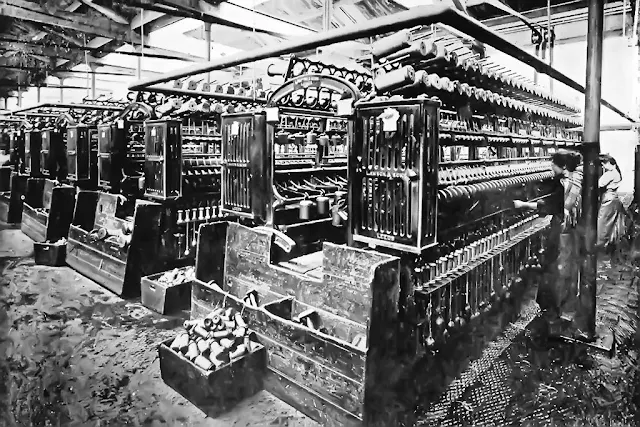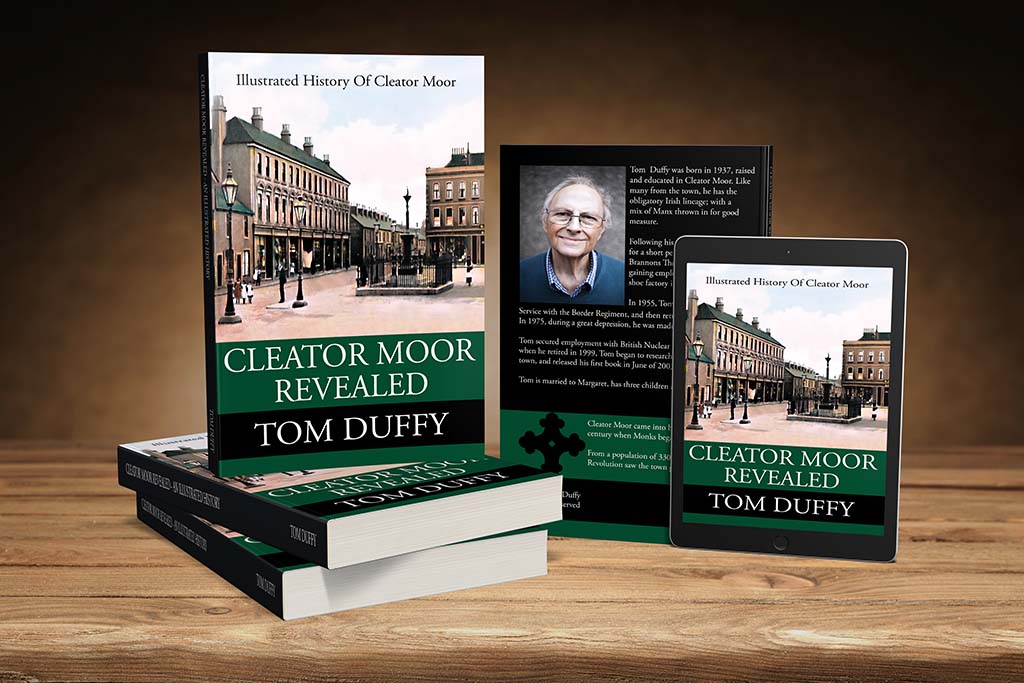Cleator flax mill was commenced in the year 1800 by Messrs Birley and Son on the site of the old Iron Ore furnaces . The mill consisted of a...
Cleator flax mill was commenced in the year 1800 by Messrs Birley and Son on the site of the old
Iron Ore furnaces. The mill consisted of a centra; tower and two wings. The Birley family struggled to make the venture a success and eventually lost all of their investments.
In 1834 it became the property of Messrs Ainsworth and Stirling. In the aggregate it employed about 300 hands. In February 1859 a new flax spinning mill was opened by the same proprietors and was capable of receiving 30,000 spindles. Of this business, Ainsworth made great success.
The mill was powered by a water-wheel. A weir was built on the Ehen, and a conduit helped channel the water towards the mill. Around 1840, Ainsworth erected a bigger, superior wheel, which was designed by Sir William Fairbairn of Manchester. The wheel ran alone until 1857, when a bea, engine was introduced. That too was designed by Fairbairn. In 1901, a pair of turbines were put down which produced three hundred horsepower.
In the the 1920s, Jewish Polish World War I veteran Jacques Spreiregen, created Kangol. In 1938, Spreiregen, who was working in London as an importer, took over the mill at Cleator. There, he ran the enterprise with his nephew Joseph Meisner. A second factory was opened at nearby Frizington, and later, under the direction of Spreiregen's younger nephew Sylvain Meisner, a third factory, manufacturing motorcycle helmets and seat belts in Carlisle.
Kangol became the major beret supplier to the British armed forces during the Second World War. All manufacture was dedicated to the army, and production reached one million berets a year.
The British armed forces continued to be a significant customer following the Second World War, purchasing 16 percent of beret production in 1953. A further 15 percent of berets were exported to 49 different countries. Around 120,000 berets a week were produced by 1957. About half of all civilian berets were exported. The British armed forces acquired around 10,000 berets a week.
Kangol was acquired by American Safety Equipment, a seat belt manufacturer, for £3.2 million in 1972. Company directors, who held 42 percent of the Kangol equity, recommended the offer. Jacques Spreiregen took the opportunity to retire as company chairman.
Kangol produced four million hats in 1975. The principal export market was Sweden, followed by the United States, then Japan and Canada. Exports to the US amounted to around 200,000 caps in 1976, accounting for over £1 million in sales. The headwear division won the Queen’s Award for Export in 1966, 1971 and 1978. Kangol was the largest hat manufacturer in the world by 1978.
 |
| Sorting Shop, Cleator Flax Mill, C1900 |
Kangol employed 690 people at Cleator and Frizington in 1995. The Cleator site was the largest hat factory in Britain. Licensed production of Kangol branded sportswear began from 1995, and shoes from 1996. Kangol received five to seven percent of wholesale value for licensed sales.
Due to rising manufacturing costs in Britain, Kangol had lost some valuable contracts. As a response to this, a factory was opened in Panyu City, China, where production costs were lower, in 1996. The Cleator factory was closed in 1997, although the site continued to act as a distribution centre.
Bollman, an American hat manufacturer, acquired the operating assets and the licence to produce Kangol headwear from 2001. The Frizington factory was closed with the loss of 80 jobs in 2001. The majority of production was relocated to China.
The licensing rights for Kangol, excluding headwear, were sold to August Equity Trust for an estimated £30 million in 2004, and then sold on to Sports Direct for £12 million in 2006.
Bollman closed the Cleator distribution site with the loss of 32 jobs in 2009.
Top Photo: Preparing Room, Cleator Flax Mill, C1900
 |
| Spinning Room, Cleator Flax Mill, C1900 |







